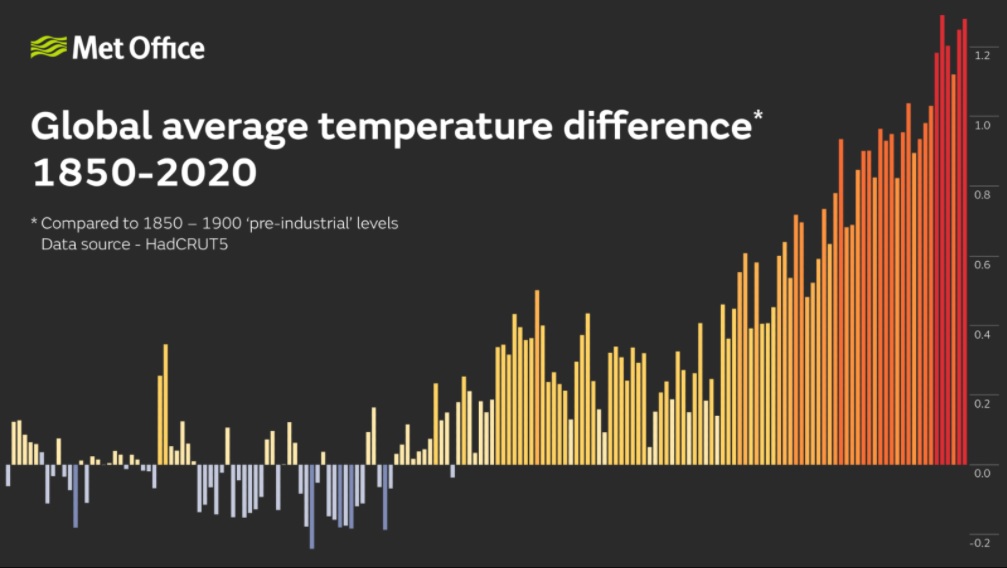Met Office - 2020 ends earth’s warmest 10 years on record
The HadCRUT5 global temperature series, produced by the Met Office, University of East Anglia and UK National Centre for Atmospheric Science, shows that the average for 2020 as a whole was 1.28±0.08°C above pre-industrial levels, taken as the average over the period 1850-1900. This makes 2020 nominally the second warmest year in the dataset’s record.
Data from a number of climate monitoring centres including the Met Office, NASA and NOAA are compiled by scientists at the Met Office for the World Meteorological Organization (WMO) to create its central annual global mean temperature estimate. The collection of datasets that make up the WMO figure all show that the previous 10 years were the warmest on record. In addition, they also all place 2020 in the top three years on record.
The ranking of second warmest in the HadCRUT5 dataset’s record is despite a transition into La Niña conditions in late 2020, which typically suppress global temperatures. Temperatures in the warmest year, 2016, were elevated by El Niño conditions which can increase global temperatures by around +0.2°C.
By using multiple datasets, it is possible to reduce some of the uncertainty in such complex global calculations. The important message is that the same general evolution of increasing global mean temperature is shown by all datasets: HadCRUT5; GISTEMP; NOAAGlobalTemp; ERA5; JRA-55; Berkeley Earth and Cowtan and Way.
The main contributor to warming over the last 170 years is human influence on climate from increasing greenhouse gases in the atmosphere. The effects of human-induced climate change are not limited to surface temperature. Warming of the climate system is seen across a range of climate indicators that build a holistic picture of climate change far beyond our expectations from natural variability across the land, atmosphere, oceans and ice.: Weather and climate change - Met Office
Results 1 to 25 of 6901
Thread: Any doubts about Climate Change?
Threaded View
-
16-01-2021, 06:40 AM #11
Thread Information
Users Browsing this Thread
There are currently 22 users browsing this thread. (0 members and 22 guests)










 Reply With Quote
Reply With Quote